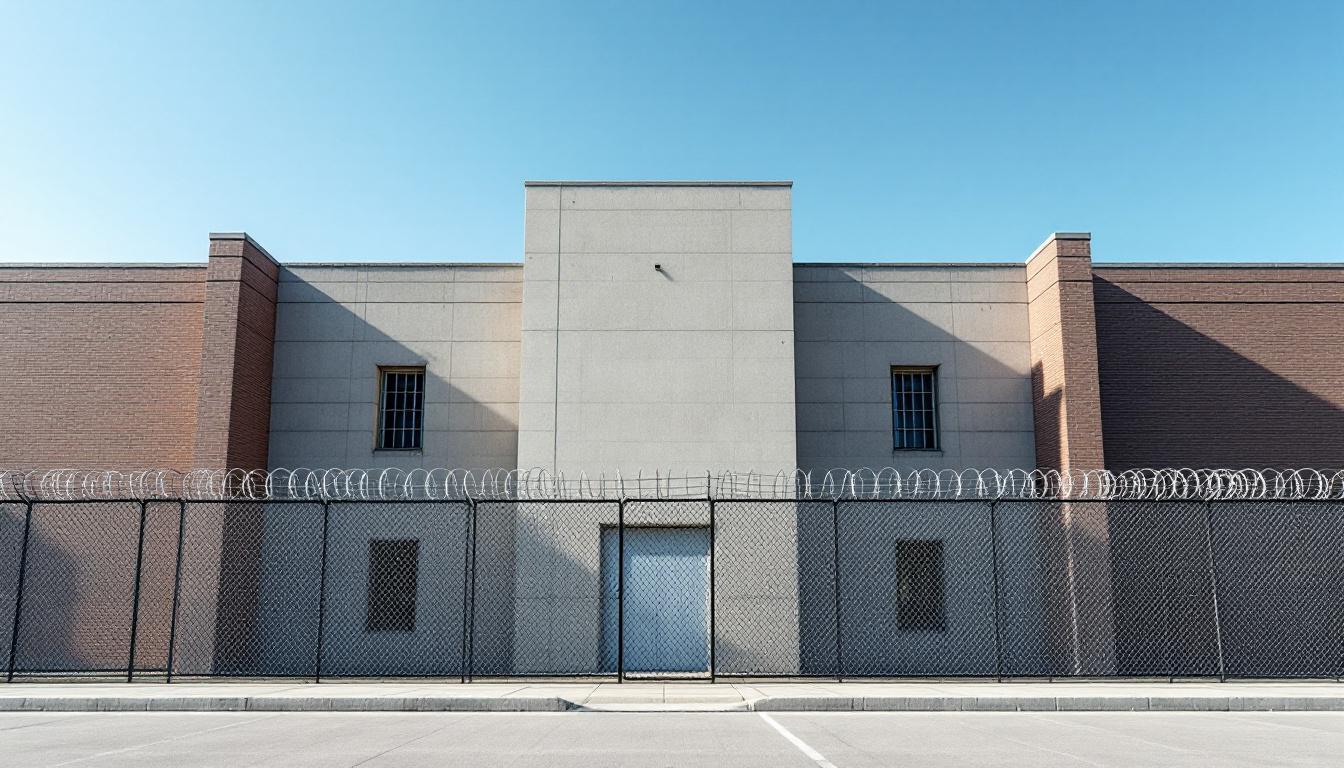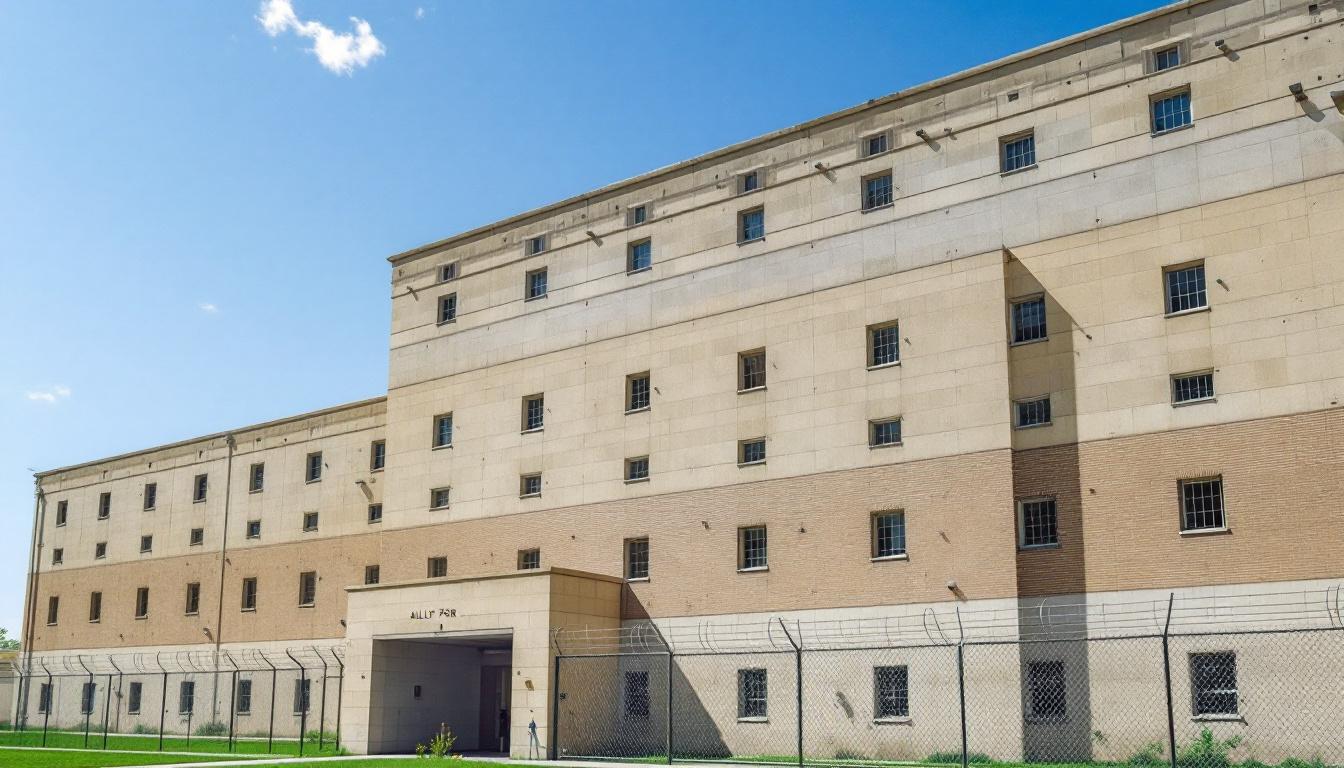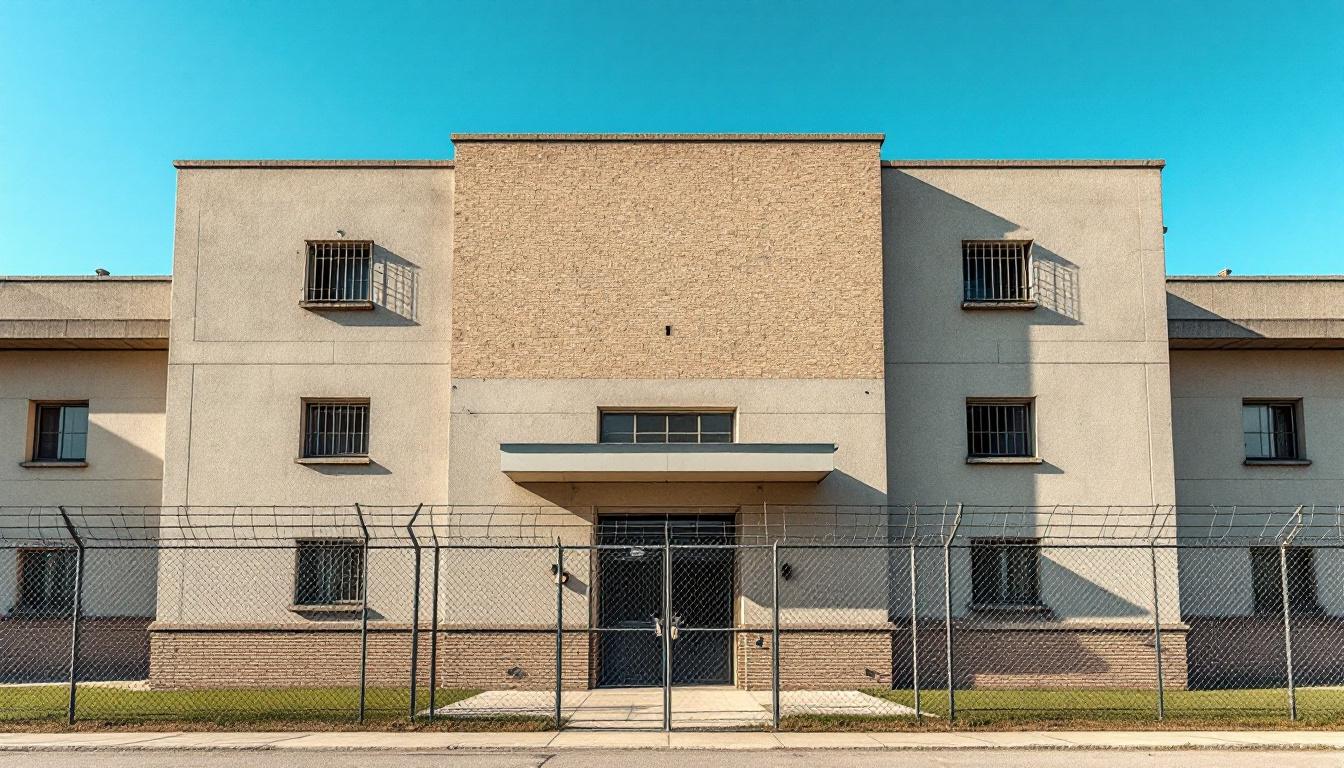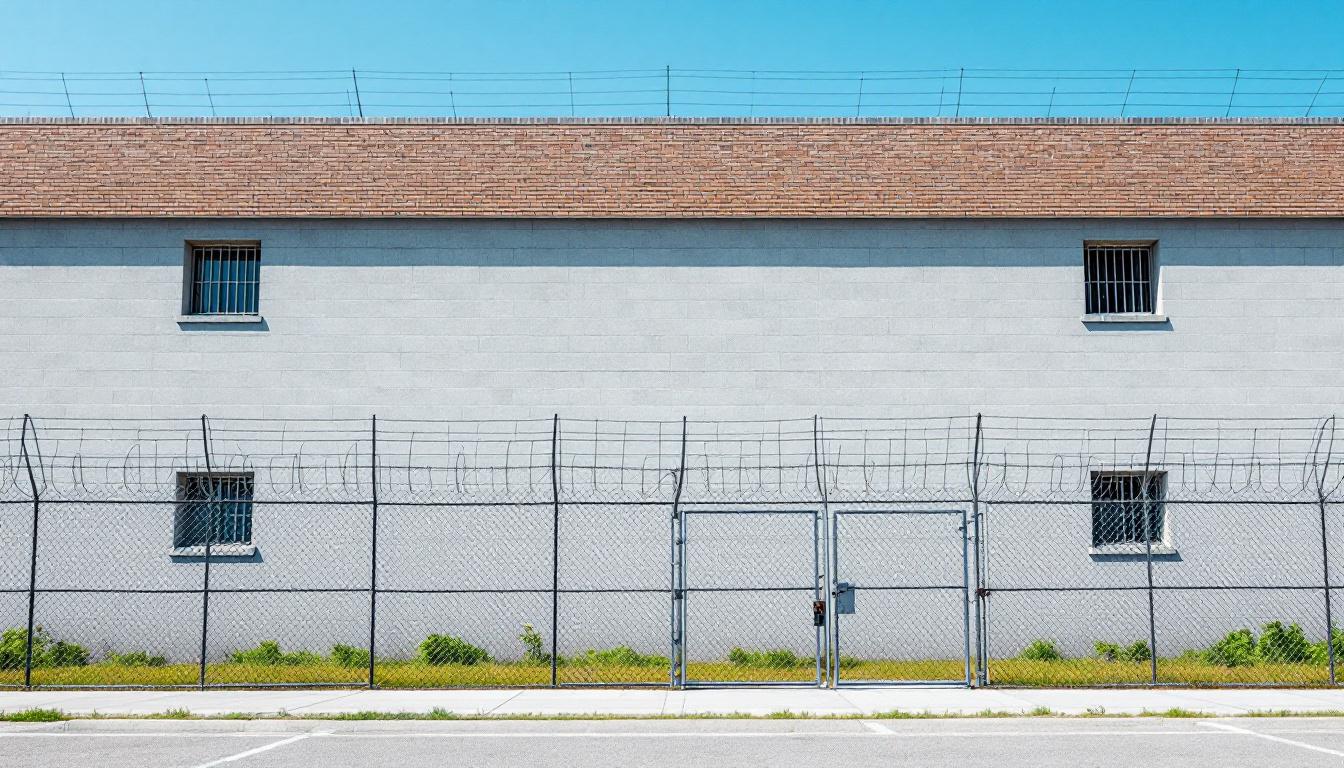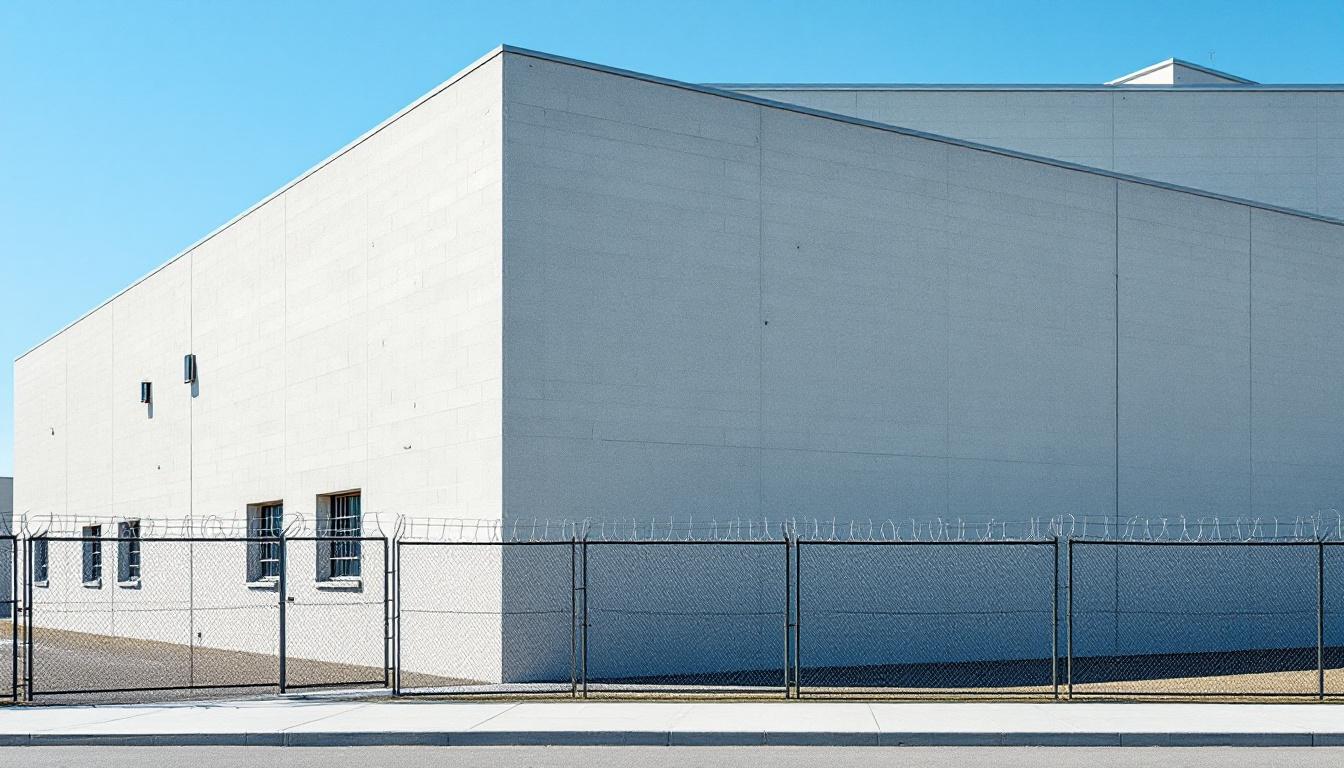
Quick Navigation
How to contact an inmate at Olmsted County Adult Detention Center (ADC)
This comprehensive guide will walk you through how to connect with an inmate at Olmsted County Adult Detention Center (ADC). Follow the steps below to find an inmate and send letters and photos:
- Search for the inmate using our search tool below
- Create your account or log in to Penmate
- Write your message (up to 6,000 characters)
- Send instantly - inmates receive printed copies daily
Find an Inmate
Search for an inmate to start communicating today
Tip: You can search by first name, last name, or inmate ID number
To contact a person at Olmsted County Adult Detention Center (ADC) start by searching for the person on the official facility website. Perform a search by following these steps:
- Step 1: Enter their first name and last name into the search form and click "Search"
- Step 2: Locate their inmate record
- Step 3: Write down their Inmate ID and any housing information provided
Important! Be sure to enter the person's full name. Nicknames should not be used.
How to Send Messages to Inmates

You can use your phone or computer to send emails, letters, and photos to an inmate. Messages are sent electronically to inmate tablets or kiosks at the facility. If you would like to send a message, start by searching for an inmate at Olmsted County Adult Detention Center (ADC).
Sending Photos and Postcards

A great way to send love and support to a loved one at Olmsted County Adult Detention Center (ADC) is to send photos and postcards. It only takes a few minutes to send photos from your phone and it makes a huge difference. You can also mail postcards with words of support and inspiration, or design your own postcard for special moments like birthdays and holidays.
Important! Be sure not to send any explicit photos or they may not be approved by the facility. You can also use a photo printing app like Penmate to make sure your photos are printed at the correct size (4x6 or 3x5) and are mailed according to the rules and regulations of Olmsted County Adult Detention Center (ADC).
Frequently asked questions about Olmsted County Adult Detention Center (ADC)
-
How long does it take to deliver a message?
If you're sending an email message your letter is usually delivered within 24-48 hours. For messages sent via mail you should expect delivery within 3-7 days. All messages will need be approved by Olmsted County Adult Detention Center (ADC).
-
How much does it cost to send a message to Olmsted County Adult Detention Center (ADC)?
You can send a message free using your phone or mail a message via USPS for the price of a $0.60 stamp and envelope. You can also purchase credits or e-stamps from services starting at $1.99.
-
What services can I use to contact an inmate at Olmsted County Adult Detention Center (ADC)?
Penmate
You can use Penmate to send letters and photos to an inmate from your phone. It's an easy way to stay in touch during your loved one's incarceration. Use the inmate locator to find an inmate's location and contact information, then you can send messages within a few minutes.
Securus messaging
Securus may be another option for communicating with an inmate at Olmsted County Adult Detention Center (ADC). You can create a friends and family account and purchase credits to send messages. All messages will be reviewed and must be approved by the facility.
JPay
Some county jails and state prisons may support sending messages with JPay. You must register an account with the system, find your loved one, and purchase stamps to send messages. For some locations you can also attach photos.
Smart Jail Mail
You may also check if Smart Jail Mail is available at Olmsted County Adult Detention Center (ADC). Smart Jail Mail is operated by Smart Communications and has contracted with some state and county jails. After purchasing credits, your messages and photos are sent to the facility, printed out, and then handed out to your loved one.
-
What is the mailing address of Olmsted County Adult Detention Center (ADC)?
Mailing address:
Olmsted County Adult Detention Center (ADC)
101 4th St SE
Rochester, MN 55904
Phone: (507) 328-6790Business hours:
- Monday: 8:00 AM – 4:30 PM
- Tuesday: 8:00 AM – 4:30 PM
- Wednesday: 8:00 AM – 4:30 PM
- Thursday: 8:00 AM – 4:30 PM
- Friday: 8:00 AM – 4:30 PM
- Saturday: Closed
- Sunday: Closed
-
What are the visiting hours at Olmsted County Adult Detention Center (ADC)?
Visiting hours at Olmsted County Adult Detention Center (ADC) vary by housing unit and security level. Generally, visits are scheduled on weekends and holidays, with some facilities offering weekday visits. Contact the facility directly at (507) 328-6790 or check their website for the current visiting schedule. Visits typically last 30-60 minutes and must be scheduled in advance.
-
What items are prohibited when sending mail to Olmsted County Adult Detention Center (ADC)?
Prohibited items typically include: cash, personal checks, stamps, stickers, glitter, glue, tape, staples, paperclips, polaroid photos, musical or blank greeting cards, hardcover books, magazines with staples, and any items containing metal or electronics. Only send letters on plain white paper with blue or black ink. Photos must be printed on regular photo paper (no Polaroids). Always check with Olmsted County Adult Detention Center (ADC) for their specific mail policies.
-
How do I send money to an inmate at Olmsted County Adult Detention Center (ADC)?
You can send money to an inmate at Olmsted County Adult Detention Center (ADC) through several methods: 1) Online using JPay, Access Corrections, or the facility's approved vendor, 2) Money orders mailed directly to the facility with the inmate's name and ID number, 3) Kiosks located in the facility lobby, or 4) Over the phone using a credit or debit card. Fees vary by method, typically ranging from $2.95 to $11.95 per transaction.
-
Can I schedule a video visit with an inmate at Olmsted County Adult Detention Center (ADC)?
Many facilities now offer video visitation as an alternative to in-person visits. At Olmsted County Adult Detention Center (ADC), video visits may be available through services like Penmate, Securus Video Connect, GTL, or ICSolutions. Video visits typically cost $10-20 for 20-30 minutes and must be scheduled in advance. You'll need a computer or smartphone with a camera and reliable internet connection. Contact the facility for their specific video visitation policies and approved vendors.
-
What identification do I need to visit an inmate at Olmsted County Adult Detention Center (ADC)?
All visitors must present valid government-issued photo identification such as a driver's license, state ID, passport, or military ID. Minors must be accompanied by a parent or legal guardian who can provide the minor's birth certificate. Some facilities require visitors to be on the inmate's approved visitation list, which may require a background check. Contact Olmsted County Adult Detention Center (ADC) for specific ID requirements and visitor approval procedures.
-
How can I find out an inmate's release date?
To find an inmate's release date at Olmsted County Adult Detention Center (ADC), you can: 1) Use the online inmate search tool if available, 2) Call the facility's records department, 3) Contact the inmate's case manager or counselor, or 4) Have the inmate provide this information during a call or visit. For privacy reasons, some facilities only release this information to immediate family members.
Facility Overview
Contact Information
Olmsted County Adult Detention Center (ADC)101 4th St SE
Rochester, MN 55904
Phone: (507) 328-6790
Official Website

About Olmsted County Adult Detention Center (ADC)
Community safety and rehabilitation converge at Olmstead County Jail, MN, where comprehensive support services extend beyond traditional detention to foster meaningful reintegration opportunities for individuals serving time in the Phoenix area. This MN correctional facility operates as an integral component of the regional justice system, typically offering evidence-based programming designed to address underlying factors that may contribute to criminal behavior while maintaining secure custody operations that protect both residents and the broader community.
Strategically positioned to serve Phoenix and surrounding Olmstead County communities, the facility generally provides a range of inmate services that may include educational programming, substance abuse counseling, mental health support, and vocational training opportunities. These county jail programs often emphasize skill development and personal accountability, working to prepare individuals for successful community reentry. The facility typically maintains connections with local service providers and community organizations to create continuity of care that extends beyond release, recognizing that effective rehabilitation requires ongoing support systems and resources.
Within Minnesota's broader correctional landscape, this facility generally operates under state oversight while addressing the specific needs of the local population it serves. Staff members typically work to balance security requirements with rehabilitative goals, often facilitating programs that may include life skills training, anger management, and family reunification services. The Phoenix-area location allows for community-based partnerships that can support both current programming and post-release transition planning, contributing to the facility's role in promoting public safety through comprehensive offender management and community integration initiatives.
Programs & Services
Building foundational skills and addressing underlying challenges forms the cornerstone of personal development services at Olmstead County Jail. The facility typically emphasizes a holistic approach to rehabilitation, recognizing that meaningful change often requires addressing multiple aspects of an inmate's life simultaneously. This comprehensive philosophy guides the delivery of various services designed to equip individuals with practical tools and coping strategies they can utilize both during incarceration and upon reentry into the community.
Educational services may provide inmates with opportunities to advance their academic credentials and develop essential literacy skills. The facility often includes basic education programs that help participants work toward completing their high school equivalency, while literacy programs typically focus on improving reading and writing abilities for those who need foundational support. In addition to this, college correspondence courses may be available, allowing motivated inmates to pursue higher education goals through structured distance learning opportunities. Vocational training services complement these academic offerings by providing hands-on skill development in trades and technical areas that can lead to employment opportunities after release.
Therapeutic services address the complex personal challenges that many inmates face, with chemical dependency treatment programs typically offering structured support for substance abuse issues. These services often incorporate evidence-based approaches to help participants understand addiction patterns and develop healthier coping mechanisms. In addition to this, trauma-informed care services may provide specialized support for individuals who have experienced significant trauma, recognizing how past experiences can influence behavior and decision-making. This therapeutic framework often extends throughout various facility services, creating an environment that promotes healing and personal growth while reducing the likelihood of reoffending.
Daily Life & Visitation

The housing units at Olmstead County Jail feature a structured environment where inmates navigate shared living spaces designed for security and supervision. At present, the facility actively maintains daily routines that begin with early morning counts and meal service. Inmates typically wake to announcements over the intercom system and prepare for structured activities throughout the day. The schedule generally includes designated times for meals, recreation, and various programming opportunities that provide stability in an otherwise uncertain environment.
Living accommodations usually consist of multi-person cells or dormitory-style housing units, where inmates adapt to sharing limited personal space with others. In addition to this shared living arrangement, inmates may store approved personal items in designated areas and access commissary services to purchase additional necessities and comfort items. The dining areas typically serve meals at scheduled times, with inmates often eating in shifts depending on housing unit assignments and facility capacity. Despite this structured approach, inmates generally find ways to personalize their daily experience within the established guidelines.
Programming schedules actively provide opportunities for inmates to engage in educational classes, substance abuse counseling, and work assignments that may include kitchen duties, laundry services, or facility maintenance tasks. Recreation time usually offers access to television viewing areas, reading materials, and limited physical exercise opportunities. Family connections remain vital through scheduled visitation periods and telephone privileges, which typically allow inmates to maintain contact with loved ones during their stay. These communication options generally provide emotional support that helps inmates adapt to the institutional environment while preparing for their eventual release.
Ready to Connect?
Start communicating with your loved one today
Search for an Inmate
